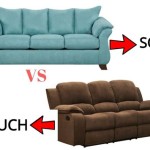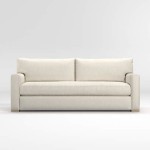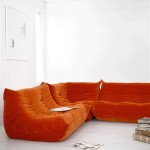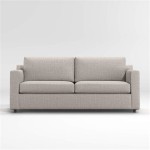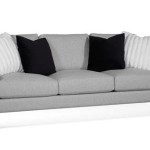Small Sofa Furniture Design
Small sofas, also known as loveseats, settees, or apartment sofas, offer versatile seating solutions for compact living spaces. Their smaller footprint doesn't equate to compromised style or comfort. Careful consideration of design elements allows these pieces to maximize space while providing functional and aesthetically pleasing additions to any room.
One crucial aspect of small sofa design is proportion. The overall dimensions must be carefully calibrated to fit comfortably within the intended space. This includes considering the sofa's height, width, and depth. A common mistake is selecting a sofa that is too deep for the room, creating a cramped and unbalanced feel. Lower profiles can create an illusion of spaciousness, while narrower widths allow for easier navigation around the furniture.
The selection of materials significantly impacts both the aesthetic and practical aspects of a small sofa. Durable, easy-to-clean fabrics are often preferred for high-traffic areas or homes with pets and children. Leather offers a classic, sophisticated look and is relatively low maintenance. Fabric choices range from linen and cotton to microfiber and velvet, each offering a unique texture and level of durability. The frame material, often wood or metal, contributes to the sofa's structural integrity and overall style. Exposed wooden legs can create a sense of lightness, while metal frames can offer a more modern or industrial aesthetic.
Arm style plays a significant role in the overall design and functionality of a small sofa. Rolled arms offer a traditional, comfortable look, while track arms provide a cleaner, more contemporary aesthetic and maximize seating space. Armless sofas are an excellent choice for very small spaces, creating a minimalist and open feel. The absence of arms also allows for flexible seating arrangements and can function as a daybed or extra sleeping space.
Cushioning is a critical factor in determining the comfort and support of a small sofa. High-density foam cushions offer firm support and maintain their shape over time. Down-filled cushions provide a plush, luxurious feel but require more fluffing and maintenance. A combination of foam and down offers a balance of support and comfort. The cushion configuration, whether single, multiple, or T-shaped, also impacts the overall look and seating experience.
Color and pattern choices significantly influence the visual impact of a small sofa. Light, neutral colors can make a small room appear larger and brighter. Bold colors or patterns can add a pop of personality and serve as a focal point. The choice of color should complement the existing décor and create a cohesive aesthetic. Consider the room's lighting and other furniture pieces when selecting the sofa's color and pattern.
Functionality is a key consideration in small sofa design. Storage options, such as built-in drawers or ottomans, can be invaluable in maximizing space utilization. Convertible sofas, including sofa beds and futons, offer versatile sleeping solutions for guests or small apartments. Some small sofas feature reclining mechanisms, providing added comfort and relaxation. Choosing a sofa with integrated functionality can significantly enhance its practicality and value.
Style considerations are essential for creating a cohesive and aesthetically pleasing living space. Mid-century modern sofas feature clean lines, tapered legs, and simple silhouettes, making them a popular choice for smaller spaces. Contemporary sofas often incorporate bolder colors, geometric patterns, and unique materials. Traditional sofas offer a classic, timeless look with rolled arms, tufted cushions, and ornate details. Selecting a style that complements the existing décor and personal preferences is crucial for creating a harmonious environment.
Placement within the room is critical for optimizing space and functionality. Positioning the sofa against a wall is a standard approach for maximizing floor space. Floating the sofa in the center of the room can create a defined seating area and improve traffic flow. Consider the room's layout, windows, and other furniture pieces when determining the optimal placement for the small sofa.
Maintenance and care are essential for preserving the longevity and appearance of a small sofa. Regular vacuuming or brushing removes dust and debris, preventing premature wear and tear. Professional cleaning is recommended for deeper stains or spills. Protecting the sofa with a slipcover or fabric protector can help prevent damage from spills and stains. Following the manufacturer's care instructions ensures the sofa remains in optimal condition for years to come.
Budget is an important factor when selecting a small sofa. Prices vary significantly depending on the materials, construction, and features. Setting a realistic budget before beginning the search helps narrow down the options and avoid overspending. Consider the long-term value and durability of the sofa when making a purchasing decision. Investing in a well-constructed piece made with high-quality materials can ensure long-lasting comfort and style.

Homcom 54 Loveseat Sofa For Bedroom Modern Love Seats Furniture Upholstered Small Couch Space Yellow Aosom

5 Sofa Beds To Hone Your Small Space Designlines

Furniture Ideas For Small Living Room Beautiful Homes

How To Arrange Furniture In A Small Living Room Setting For Four Interiors

Small Living Room Ideas 3 Easy Design Strategies Spaces

10 Tips Of Sofa Set Design For Small Spaces

Modern Living Room Furniture Small Fabric Sofa Set 3 2 1 Seater Sectional

55 Heartfelt Small Living Room Ideas To Maximize Your Space Pictures 2025

Inspiration 5 Types Of Essential Furniture For Small Spaces The Brick

Homcom 56 2 Seat Sofa Modern Love Seats Furniture Upholstered Seater Couch With Side Pockets Solid Steel Frame White
Related Posts


